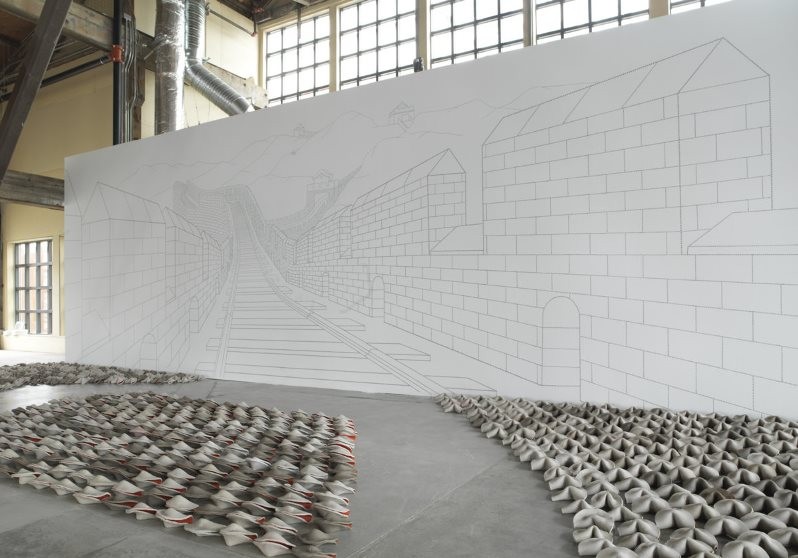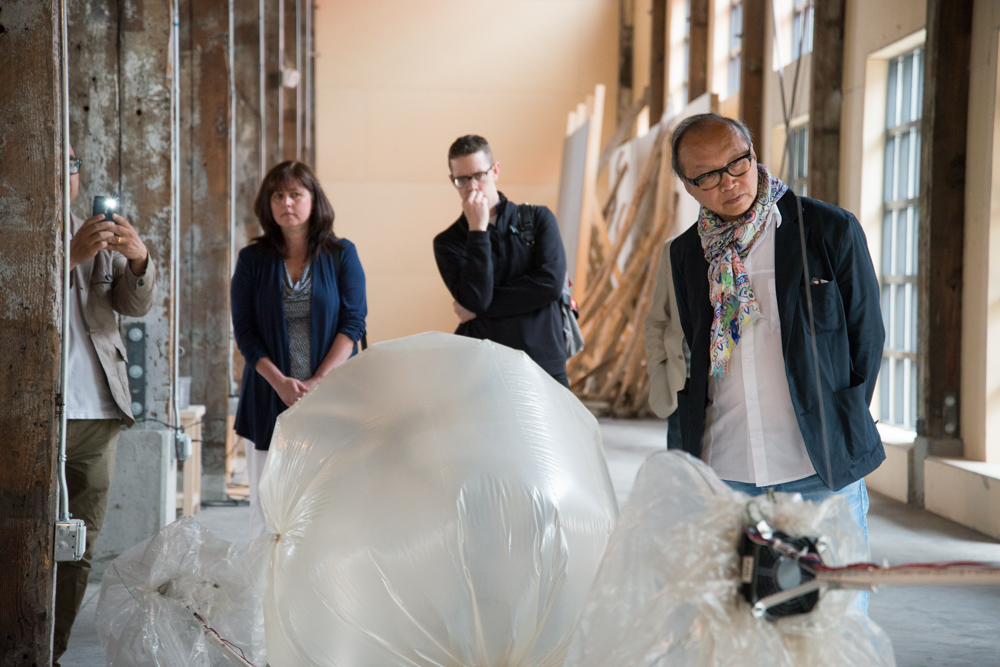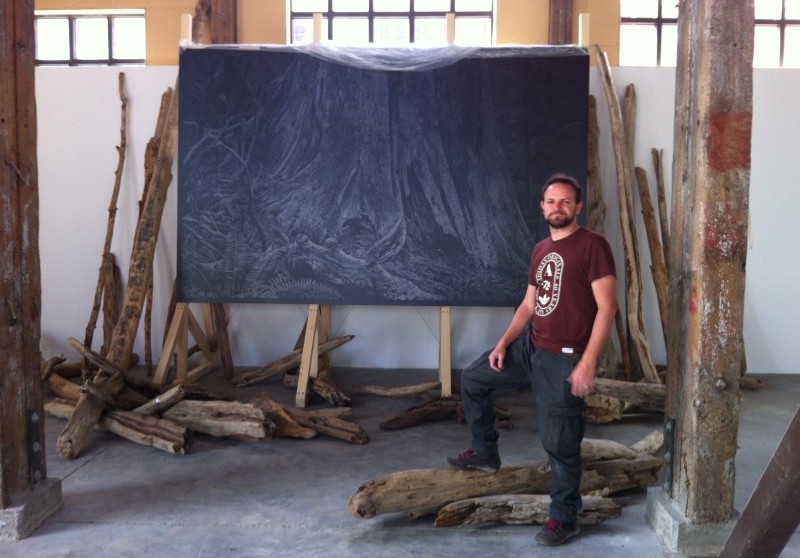Relating Art to the Written Word
Language Arts - Grade 6
This inquiry challenge is intended to be used in connection with the full set of cross-curricular, multigrade inquiry challenges written for the entire Pavilion exhibition. The related unit plans are listed as “Related Material”. This unit of inquiry is not a recipe book but rather a launchpad to inspire new BIG IDEAS. We encourage you to use and/or modify one, or several of the BIG IDEAS below. Adapt it to the grade/ ability level of your students.
Enduring Understanding
Artwork has the power to reflect the stability and instability of culture, economy, government both past and present.
Guiding Questions
In what ways can stigmatism be broken down and perception be changed about a nation? How would you describe the current state of affairs in Brazil? What are the collective voice of the Brazilian contemporary artists? How does the current state of affairs in Brazil relate to life in Vancouver, Canada and the world?
Mind Opening
Choose or devise practices to encourage students to be open to new experiences and ways of thinking in your classroom. For example, the MindUP in-school program.
Discovery and Inspiration:
Launch the Project
• Introduce the Theme: Present the Enduring Understanding and Guiding Questions using vocabulary that is appropriate for your grade level.
• About Vancouver Biennale: Play a short video.
• Create Project Space: Brainstorm ideas to make the project theme visual and visible using bulletin boards, and/or a project corner to share relevant materials and inquiry questions and processes.
Reference Resources:
• Explore Vancouver Biennale 2014-2016 Exhibition Theme: Open Borders / Crossroads Vancouver
• Biennale International Pavilion/Focus on Brazil: for Information about the Pavilion
• Unit Plan Feature Art Installation and Artist: ∩ [Intersect] by Juliana Cerqueira Leite
• Related Unit Plans: Brazil’s Current State of Affairs, Rainfall in Vancouver & Sao Paulo, Relating Art to the Human Body, Borrowing from Indigeneity: Totems, Tension in Canadian History
• Other Pavilion Brazilian Artists: Paulo Climachauska, Nathalia Garcia, Mariana Manhães, Marcelo Moscheta, Gisela Motta & Leandro Lima, Raul Mourão, Tulio Pinto, Studio in the City
Behind the Scene Making of the Pavilion Video
Learning to Learn:
Art Inquiry
• Ask students to write in their journal and share how would they describe the culture of Brazil before visiting the Pavilion and indicate how did they form these impressions. After the visit, ask the students if their perceptions have changed and if so, in what ways.
• BIG IDEAS Anywhere educators: Experience the Pavilion and its thought provoking Brazilian art anytime here using a 3D Navigator/Viewer – you can walk around the space with your mouse and interact with the art as if you are there! For best virtual art inquiry experience, freely explore the Pavilion and locate ∩ [Intersect] (Juliana Cerqueira Leite) for further inquiry challenges. Interact and experience with this installation from different angles using the 3D Navigator/Viewer. Also view the Pavilion Guided Tour Video segment about this specific artwork (from 4:08 to 5:12 min) MUTE ON.
• Use the Art Inquiry Worksheet to guide and capture their ideas and impressions. Customize or create your own Art Inquiry Worksheet as appropriate for your project and class needs.
• Click the Box Below to begin your Pavilion Virtual Exploration via 3D Navigator/Viewer provided by Real Estate Channel (Contact: info@realestatechannel.ca)
Shared Insights
• Sharing Art Inquiry Experience: Ask students to share the Art Inquiry Worksheet responses in class.
• View Guided Tour Video: View the Pavilion Guided Tour Video introductory segment and segment about this specific artwork (from 0 to 1:15, 4:08 to 5:12 min) again with SOUND ON.
• Significant Aspects of the Artist’s Life & Work : Using the following information about Juliana Cerqueira Leite, teacher creates stations detailing the artist’s life and work. In small groups, students rotate through these stations. Topics might include: (1) education and training; (2) life’s work; (2) materials and processes; (3) beliefs and values. At each station, students answer questions and/or complete tasks. For example, at the station “life’s work” students might plot the artist’s various installations on a map of the world.
• Artist Themes – Processed-based Sculpture and Collaboration: Review how the artist and her partner were immersed in a shared time and space before meeting with each other in middle. Ask the students to relate this process to daily encounters in life and how this approach can resolve potential tensions.
Cross-Curricular Inquiry Challenges
∩ [Intersect] (Juliana Cerqueira Leite) Inquiry Challenge
• Language Arts – Poetry: How can artwork relate to the written word?
Teachers to choose one poem from The Poetry Foundation that they feel echoes, extends or challenges the theme of human intersection in Cerqueira Leite’s Intersect. The teacher presents the students with the following questions: Why do you think this poem was chosen? What do the installation and the poem have in common? Is it possible for language and words to express a work of art? Which do you like best: the poem, or the artwork? Why? What does this pairing say about life today? Do you think someone looking at it 25 years from now would “get” the same meaning? What about 100 years from now?
Students to choose a poem from The Poetry Foundation that they feel echoes, extends or challenges the themes in Cerqueira Leite’s Intersect. Students write a short paragraph explaining why they chose their poem. Students share this poem in groups of four. Students write their own poem on Cerqueira Leite’s Intersect which they will share the next day. They are told that they can set it to music or a beat.
Poetry Sharing I – Students share their poems within their groups. Groups then put the words of their poem into a tool like Wordle to see the “word cloud” that emerges. These Wordles are then posted on a bulletin board in the class to see what themes and key words emerged from the individual poems. Ask students: Does the word cloud make you see the themes, ideas or subjects of each more clearly?
Poetry Sharing, Part II – Students come to the front of the class in their groups to present their individual poems. Groups then present their collaborative Wordle. At the culmination of the presentations, the class looks at the group Wordles in an attempt to draw out common class interpretations of Cerqueira Leite’s work.
Reflection
• Teacher and students can reflect on their entire learning process by revisiting the Enduring Understanding and Guiding Questions.
• How did the unit of study open inquiry, create cross–curricular learning opportunities and/or apply learning to real life situations? Has this unit of inquiry changed your opinions, values and world view? In what ways, if any, has it helped you grown as a learner?
Credits
Written by: Stephanie Anderson Redmond, B.A.; B.Ed.; M.Ed.; Ph.D. Student, Department of Curriculum and Pedagogy, UBC
©2014 Vancouver Biennale





